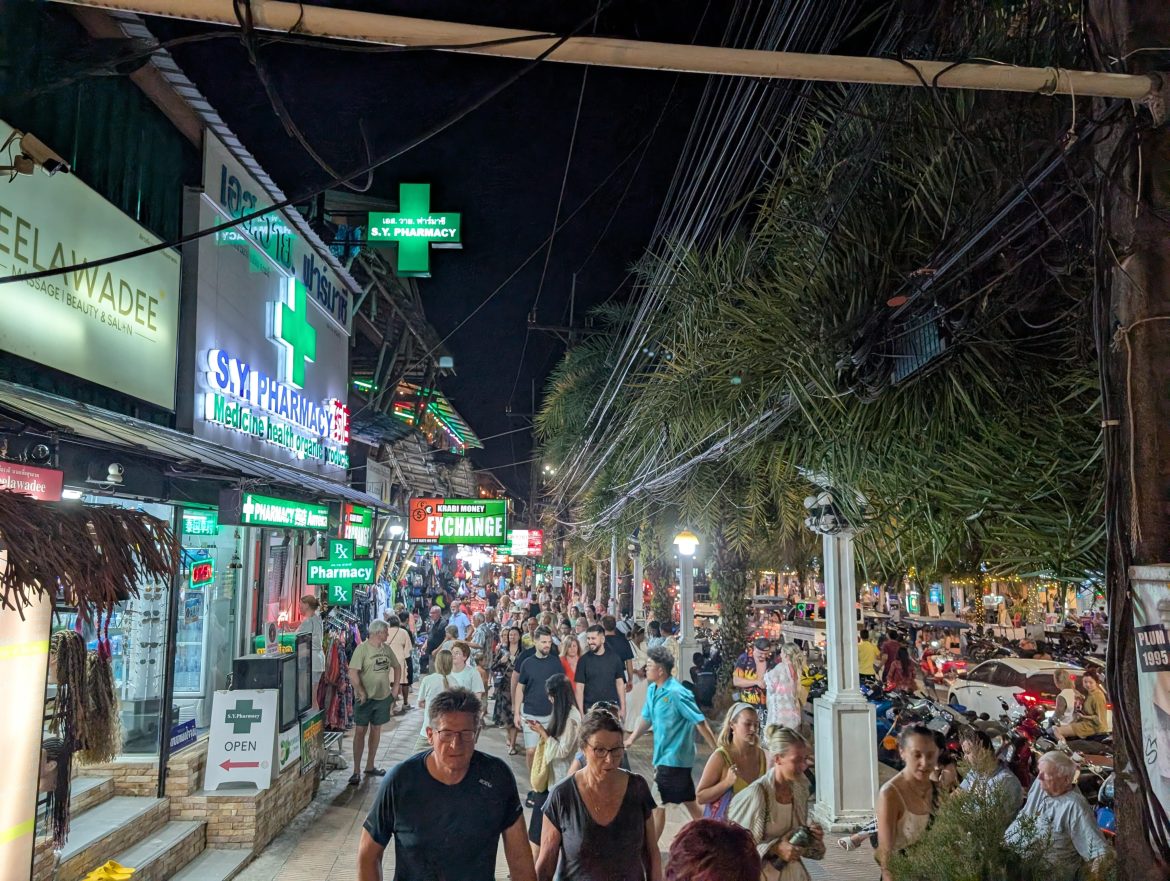I remember Ao Nang in 2012—a place of natural beauty, an escape where limestone cliffs framed a breathtaking coastline. The air carried the scent of saltwater and adventure, the beaches were lively but relatively clean, and the food was an authentic taste of Thailand. It was a place that stayed with me, a memory I held onto, expecting to return and find it just as magical. But reality has a way of eroding nostalgia, and my return to Ao Nang in 2025 has been nothing short of a disappointment.
From the moment we arrived, it was clear that the Ao Nang I had remembered was no more. The once-clean beaches with locals are now littered with trash—plastic bottles, food wrappers, and cigarette butts scattered across the sand. It’s a stark contrast to the enchantment I remembered. The charm of a small beach town has been replaced with a congested tourist hub, overflowing with people and boats.
Overtourism has taken its toll. Longtail boats and speedboats churn the waters from sunrise to sunset, ferrying crowds to nearby islands and drowning out the once-serene atmosphere. Finding a quiet spot to enjoy the beach is nearly impossible; the sheer volume of people makes it feel more like a crowded marketplace than a tropical retreat. Vendors aggressively push tours and souvenirs, and the streets are lined with restaurants serving non-local food to cater to the influx of international visitors. It’s disheartening to see the authentic charm of Thai cuisine overshadowed by generic Western menus and overpriced, mediocre dishes.
Adding to the disappointment, our family has been battling food poisoning for a week. Diarrhea, stomach cramps, and fatigue have robbed us of the joy we hoped to experience here. It’s hard to enjoy a beach town when you’re constantly searching for a bathroom or struggling to keep meals down. We take precautions when we travel, but somewhere along the way, we were unlucky. Perhaps it was a street vendor, or maybe even a restaurant we thought was safe—there’s no way to know for sure. But it has cast a shadow over our time here, making the crowds and pollution feel even more unbearable.
As we walk through the streets, the smell of cannabis fills the air, a constant presence that blends with the exhaust fumes of passing motorbikes. Every few minutes, a noisy advertisement for Muay Thai boxing blasts from a passing truck, urging tourists to buy tickets for the next big fight. The cacophony of modern tourism has replaced the tranquility I once knew here.
It breaks my heart to see how much Ao Nang has changed. The peacefulness, the local charm, the natural beauty—it feels like it has been sold off piece by piece in the name of tourism. Maybe it was naive of me to think that places stay the same, that I could return and relive the magic of a decade ago. I know now that those memories belong to the past. If I had never come back, perhaps I could have held onto that beautiful vision of Ao Nang. Instead, I leave with the heavy realization that some places are best kept in memory, untouched by the passage of time and the reality of what they have become.

